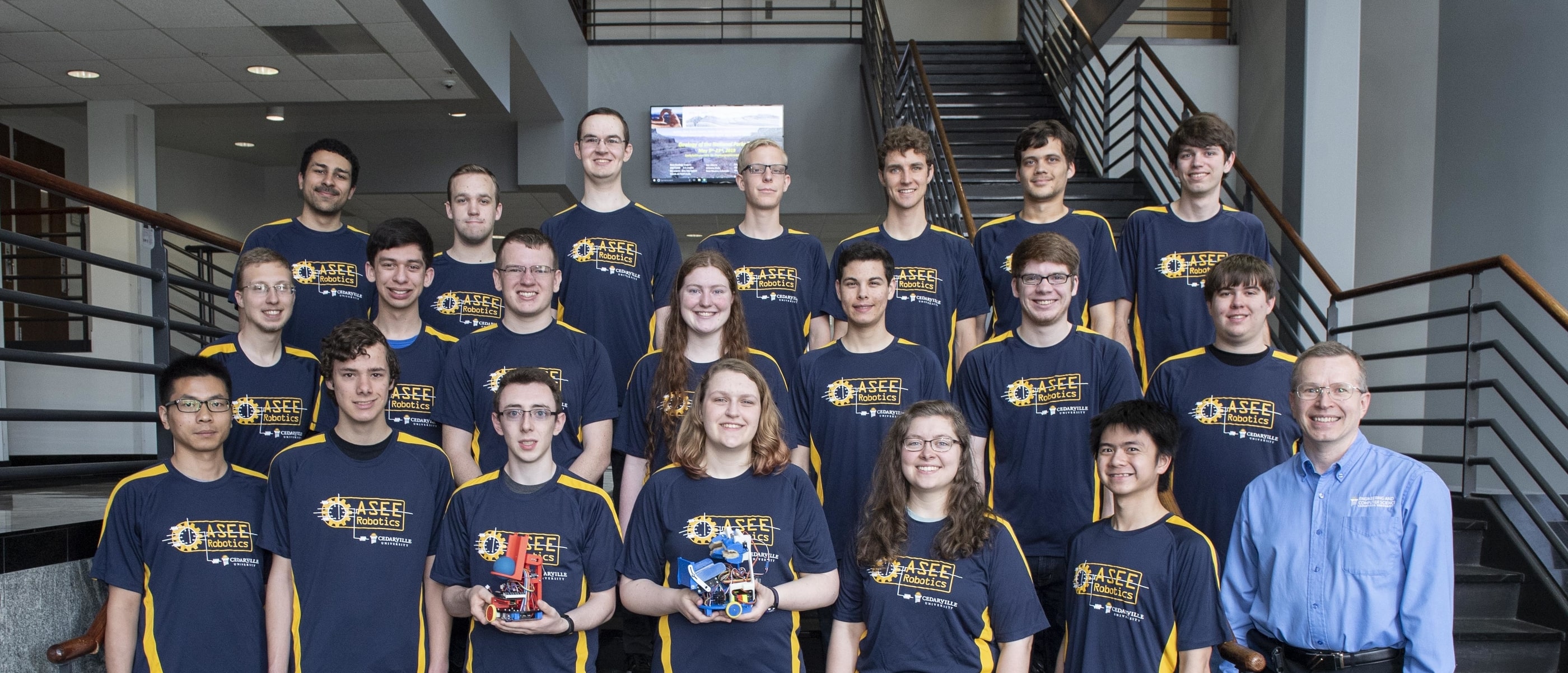 2019
2019
The objective of the 2019 ASEE Robotics Competition, hosted in Tampa, Florida, was to design and build an autonomous robot that could rescue injured and stranded victims (wood pegs) of a hurricane from random locations and return them to either the hospital or storm shelter while avoiding obstacles. Extinguishing a simulated fire caused by downed power lines also earned bonus points. The robots had a time limit of 120 seconds in each of their four allotted trials and could earn a bonus by returning injured victims (red painted pegs) in the least amount of time. The first trial had set positions for the pegs and the obstacles, but the positions for the other three trials were generated at competition.
This year, we returned to an older design for inspiration, 2017's R2 and D2 . That year's competition was similar to this year's because it involved collecting pieces from the field and rapidly maneuvering around obstacles. We reused the dual robot aspect and the idea of a claw system to collect the pegs from the field. By splitting our entry into two robots, Fire and Rescue, each robot was better suited to its individual task, making the entry more capable as a whole.
The key aspect of this year's design was efficiently navigating around the game board. The biggest change this year was having randomized locations for game pieces which would be released to the teams only one hour before the competition started. In addition to building a robot that could adapt to any game position, the principle challenge we faced was writing code that could navigate the robot to an arbitrary and untested sequence of locations in an efficient manner. Our lead programmer, Ian Steptoe, solved this with a graphical program that would generate a sequence of turns and pickup instructions for the robots based on the positions of the pegs. We determined that we would essentially need to solve the traveling salesman problem for any valid position. We first measured the time the robot took for moving forward one grid length and for turning different directions. Based on these times, the program would test every path that the robot could take to complete the run and determine the fastest route.
At competition, Fire and Rescue placed 1st overall, even after a disastrous mishap involving a camera flash in the first round. The judges graciously allowed us to rerun the first trial after we showed that the flash was the cause of the problem. We also experienced a close final round, where our team led by less than 1 point going in. This left the outcome of the competition entirely down to a time difference of less than 2 seconds between us and the second place team. In addition to placing first in the time trials, our presentation team, consisting of Joel Kendall, Ian Steptoe, and Micah Walden, placed first in the Exhibit section, giving us a few crucial points.